GREYHOUND (2020)
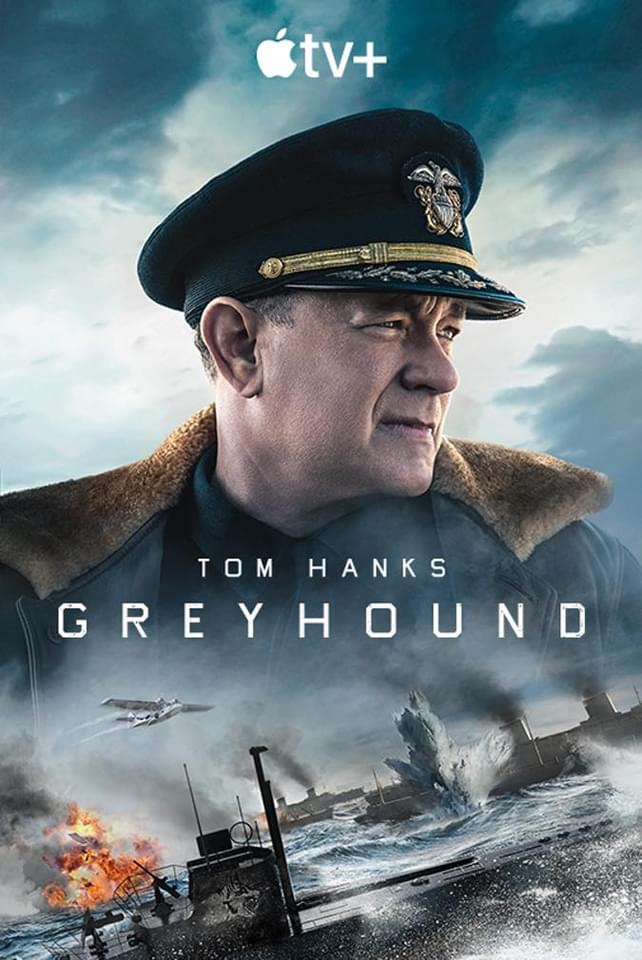
Greyhound (2020) is a World War II naval drama directed by Aaron Schneider and based on the 1955 novel The Good Shepherd by C. S. Forester. The film stars Tom Hanks, who also wrote the screenplay, in the role of Captain Ernest Krause, commanding a U.S. Navy destroyer, the USS Keeling (codenamed Greyhound), on its mission to protect a convoy of Allied ships across the treacherous Atlantic Ocean from German U-boats.
Suggested videos for you:
Plot and Structure
The plot is tightly focused on the intense 48-hour period during the Battle of the Atlantic, as Krause leads the convoy through the “Black Pit,” a section of the Atlantic where air cover is not available, leaving the ships vulnerable to enemy attack. The movie is almost entirely confined to the Greyhound’s bridge, intensifying the claustrophobic, high-stakes atmosphere.
Unlike many war films, Greyhound wastes little time on backstory or personal development, instead plunging viewers into the heart of the action. This minimalist storytelling style works to emphasize the relentlessness of the battle, where every decision could mean life or death. The film effectively portrays the constant pressure on Krause, a first-time captain who must confront his own doubts and the ever-present threat of disaster.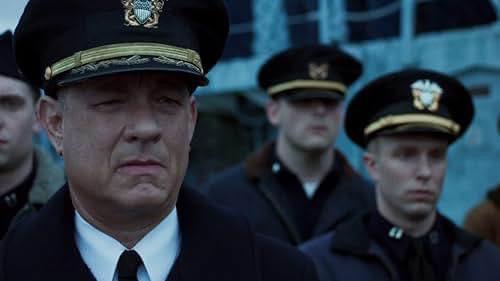
Themes
One of the key themes in Greyhound is leadership under pressure. Krause is a devout man whose internal struggle with self-doubt is subtly conveyed by Hanks’ performance. He constantly questions whether he’s doing enough to protect his men and the convoy, bringing a humanizing element to the otherwise action-heavy narrative.
Another theme is the brutal, methodical nature of war at sea. The film captures the mental and physical toll of naval warfare, where every encounter with the enemy is a game of cat and mouse with life-or-death stakes. The crew’s exhaustion, the difficulty of communication under stress, and the unpredictability of the ocean make for a gripping experience.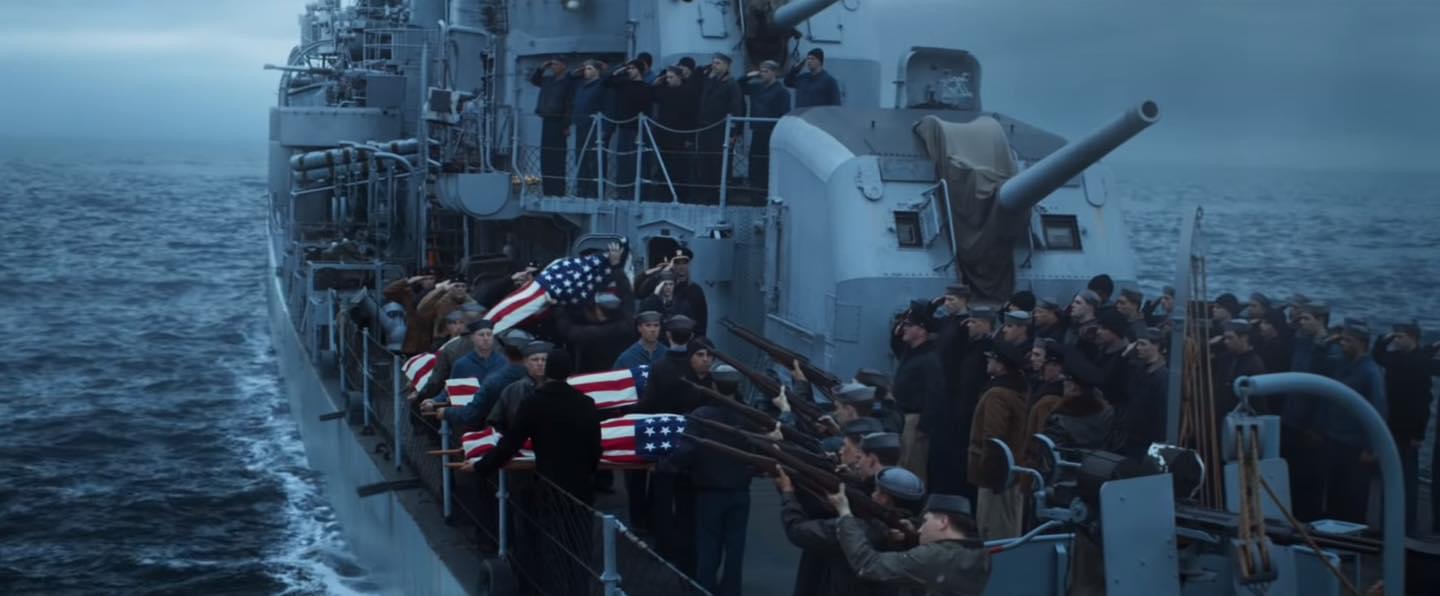
Visuals and Sound
Greyhound shines in its technical execution. The visual effects, particularly the sequences involving U-boats and torpedoes, are convincing and immersive. The grey, turbulent sea and the foreboding skies create an atmosphere of constant tension. The film also uses sound design masterfully, with the mechanical noises of the ship, the beeping of radar, and the booming of distant depth charges contributing to the atmosphere.
The combat sequences are tight and precise, with clear attention to tactical maneuvers and the intricacies of naval warfare. However, they might come across as repetitive for viewers looking for a more diverse array of action set-pieces.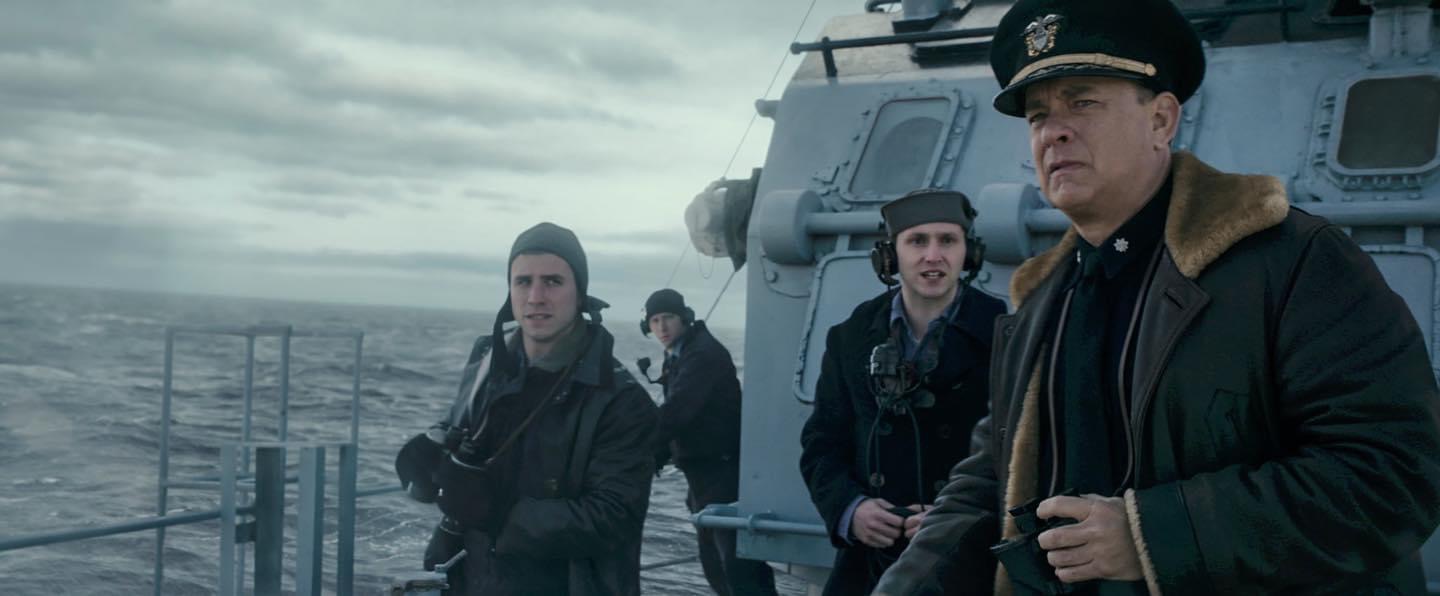
Tom Hanks’ Performance
As Captain Krause, Tom Hanks brings his characteristic empathy and humanity to the role. Although the film doesn’t delve deeply into Krause’s backstory, Hanks conveys a lot through his restrained performance—his fatigue, his resolve, and the moral weight of command. He perfectly embodies a man who feels the heavy burden of responsibility, often resorting to prayer or personal reflection amid the chaos.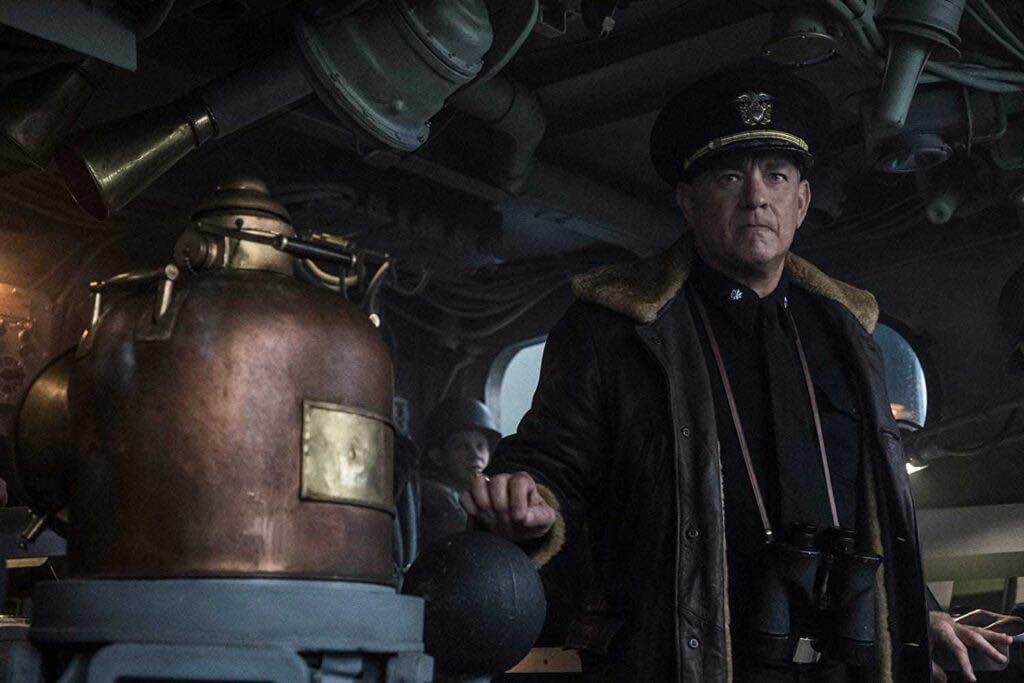
Criticism
While Greyhound excels in action and atmosphere, its lack of character development may leave some viewers wanting more. Aside from Krause, few characters are given substantial screen time or depth, making it harder to become invested in their fates. This approach keeps the narrative focused, but at the expense of emotional engagement.
Additionally, the film’s relentless pace and repetitive nature may not appeal to all audiences, especially those looking for a broader exploration of wartime themes.
Conclusion
Greyhound is a taut, intense war film that focuses on the tactical and psychological challenges of naval warfare during World War II. It is efficient, technically impressive, and anchored by a strong performance from Tom Hanks. However, its narrow focus on the immediacy of battle may leave viewers wishing for more character-driven moments. It’s a solid watch for fans of military history and war films, but it may not satisfy those looking for more depth in its characters or narrative.











